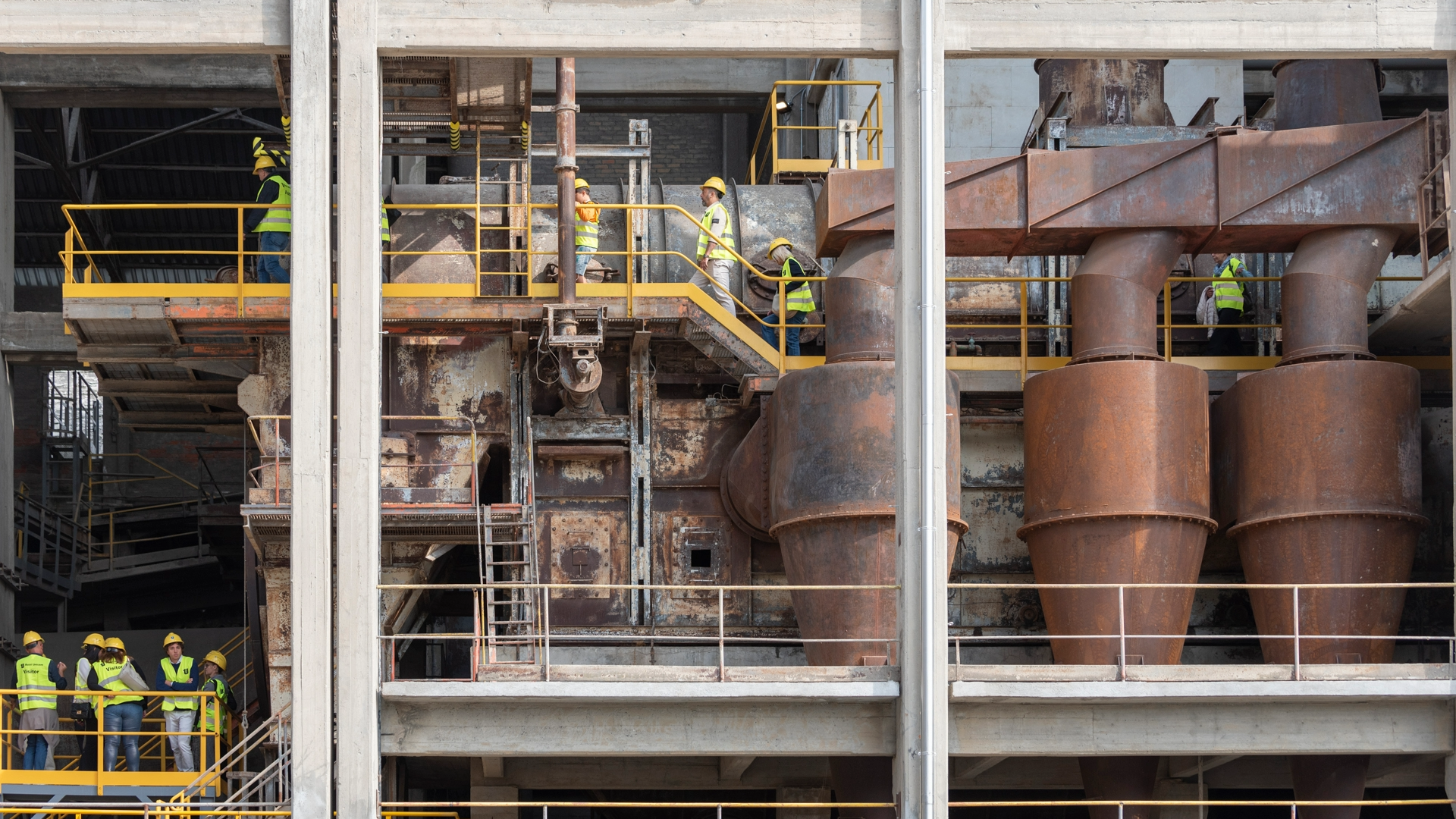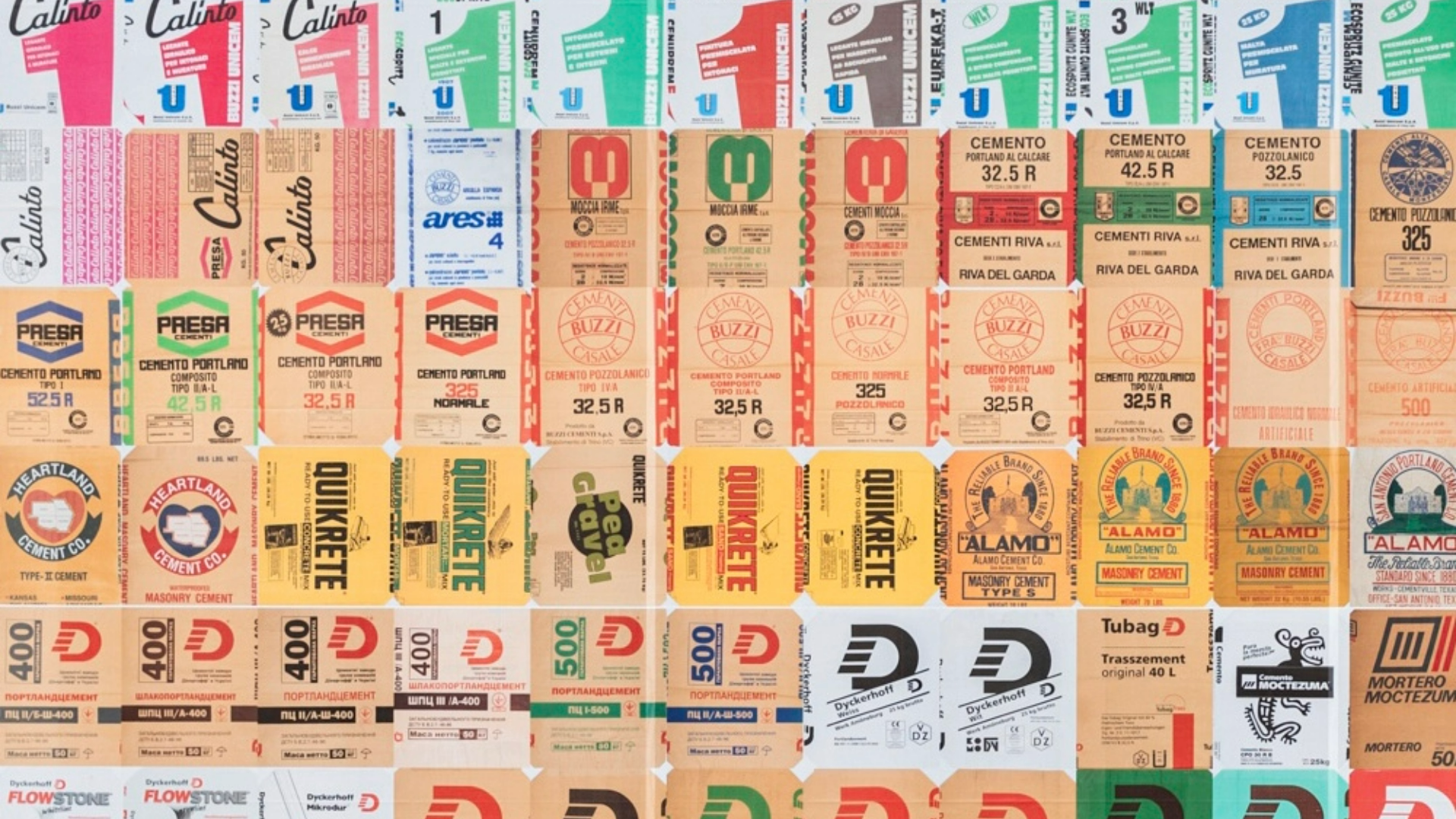La memoria diventa arte (Memory becomes art)
Buzzi’s AREA907 Corporate Museum was inaugurated on 21 September 2024 and designed to show the history of bygone machinery and highlight our human capital through art as well as the active involvement of our employees.
Located inside the Trino cement plant (Vercelli, Italy), the AREA907 exhibition reclaims and highlights the historic industrial processes of Buzzi's first plant, which, like the company, was founded in 1907. As a result of reconfiguring the layout of the plant’s boundary and the comprehensive set of historic machinery still in existence at the cement plant, we were able to create an actual museum circuit that is perfectly integrated into the current operations of the plant.
The Trino cement plant produced natural cement with vertical kilns until the end of the Second World War. Between 1950 and 1960, the complex underwent its first transformation into a modern artificial Portland cement production plant. Between 1968 and 1976, the plant was transformed for a second time to perform processes that paralleled and complemented the cement production operations. Two kilns were installed to produce expanded clay, used as an aggregate for lightweight structural concrete. Today, with 55 employees, the plant operates as a grinding center for the production of cement, binders and premixes. The Trino plant has also always served as a landmark for the local community due to its industrial activities and support of initiatives on behalf of the residents.
The educational, historical and artistic itinerary in the plant
There are museums in Europe that tell the story of cement through "artifacts", as well as former industrial sites that are no longer active but can still be visited. In both cases, however, the visitor’s experience is more comparable to that offered by a documentation center or an archaeological site. Displaying the machinery within its industrial habitat – and one that is still in operation as in the AREA907 project – has allowed us to show the history of both the technological development and the cement production process in their natural environment, creating a tangible, immersive experience for a unique cultural asset within the landscape of private corporate museums, and thus becoming an important reference point for industrial tourism, the region as well as for educational purposes.
After being greeted and given personal protective equipment (helmet and high-visibility vest), visitors are accompanied by a guide to begin their tour inside the industrial area.
The two cement kilns, the two expanded clay kilns, the pozzolan dryer, the entire unit of five historic, finished product mills, as well as several prototypes and some minor machinery, have been reclaimed and rendered safe for visiting.
There are two exhibition spaces along the visitor-accessible route inside the plant, the first of which uses images and content from the company’s archives to introduce the history and memory of the company. It serves as the starting point for familiarizing oneself with the plant and will host an educational laboratory in the future. The second area is the museum’s meeting room, named after Cavaliere del Lavoro (Knight of Labour) ing. Sandro Buzzi. Made of glass, the room is located under the platform housing the cement kilns with the two Polysius Lepol acronyms, Pa.Vo., which stands for "Patience and Willingness" (1955) and Fo.Co., which stands for "Strength and Courage" (1959). On permanent exhibition here are the Abecedary and a Neo-dimensional Map, works created specifically for AREA907 by the artist Giuseppe Stampone (Cluses, 1974), with whom Buzzi established an important relationship for this project. Using the inclusive methodology, termed as Global Education, developed in the early 2000s, Stampone has gathered ideas and suggestions from employees and translated them into an abecedary of collective identity. The abededary comprises 21 letters created with a ballpoint pen on paper, each of which is associated with a drawing and a word that represent the values upon which Buzzi was founded and which have recounted the past and still recount the story of the Trino plant and the company. Stampone's abecedaries are meant to serve as tools for a new literacy, in which words and images are coupled in unusual pairings to create short circuits that can reread reality in an unprecedented way.
Buzzi's collaboration with artist Giuseppe Stampone
"I think that my contribution is a way of enhancing existing content, providing it with a grammar and language – says Giuseppe Stampone – through an artistic vision, art can offer a different perspective on existing historical and industrial content, it can describe history and also give rise to new stimuli".
Together with the abecedary, Stampone has produced a neodimensional, axonometric map, which uses specific tags to trace the constellation of words and letters that form the basis of Buzzi's history and founding principles.
The Europa installation, consisting of a ballpoint pen drawing on paper, gold leaf, six concrete boards and a soundtrack, are located in the plant’s historic control room.
Last but not least, the abecedary is also featured in 21 retroreflective modules arranged in specific locations within the Trino plant as artistic signage for the visitor, and employing a special central theme in blue (the distinctive color of the artist's work and Buzzi).
For information on AREA907 please email area907@buzzi.com.
AREA907 has become part of Museimpresa - Italian Association of Corporate Archives and Museums. Find out more: https://museimpresa.com/associati/buzzi/



























